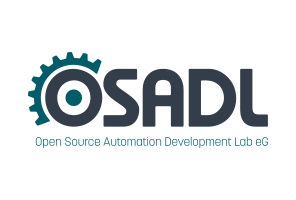Dates and Events:
|
OSADL Articles:
2023-11-12 12:00
Open Source License Obligations Checklists even better nowImport the checklists to other tools, create context diffs and merged lists
2022-07-11 12:00
Call for participation in phase #4 of Open Source OPC UA open62541 support projectLetter of Intent fulfills wish list from recent survey
2022-01-13 12:00
Phase #3 of OSADL project on OPC UA PubSub over TSN successfully completedAnother important milestone on the way to interoperable Open Source real-time Ethernet has been reached
2021-02-09 12:00
Open Source OPC UA PubSub over TSN project phase #3 launchedLetter of Intent with call for participation is now available |
Real Time Linux Workshops
1999 - 2000 - 2001 - 2002 - 2003 - 2004 - 2005 - 2006 - 2007 - 2008 - 2009 - 2010 - 2011 - 2012 - 2013 - 2014 - 2015
14th Real Time Linux Workshop, October 18 to 20, 2012 at the Department of Computer Science, University of North Carolina at Chapel Hill
Announcement - Call for papers (ASCII) - Hotels - Directions - Agenda - Paper Abstracts - Presentations - Registration - Abstract Submission - Sponsors - Gallery
Design and Implementation of an Safety-Critical Application Targeting Modular Certification
Andreas Platschek
Modular Certification promises to allow the reuse of already certified applications by showing the independence of the application from other software employed on the system. While most publications focus on the operating system that guarantees the independence of applications, this paper takes a detailed look at the life-cycle of the application and how the development of such an application differs from developing a software application in a federated architecture.
In order to get an idea of how feasible an actual modular certification, this paper starts off by analyzing the landscape of standards that support modular certification. This short summary of standards is followed by a generic analysis of the problems arising when going for a modular certification as well as the advantages gained. The rest of the paper presents a real-world example for designing and implementing a typical application of the automotive domain (an indicator control system) into an integrated architecture.
This real-world example does not only show the technical aspects, but one can easily deduce the economic implications of a federated approach - namely the simplification for small software companies to enter the market and write applications for the automotive industry. Furthermore this approach encourages the usage of pre-existing FLOSS software by ensuring the independence of applications.




